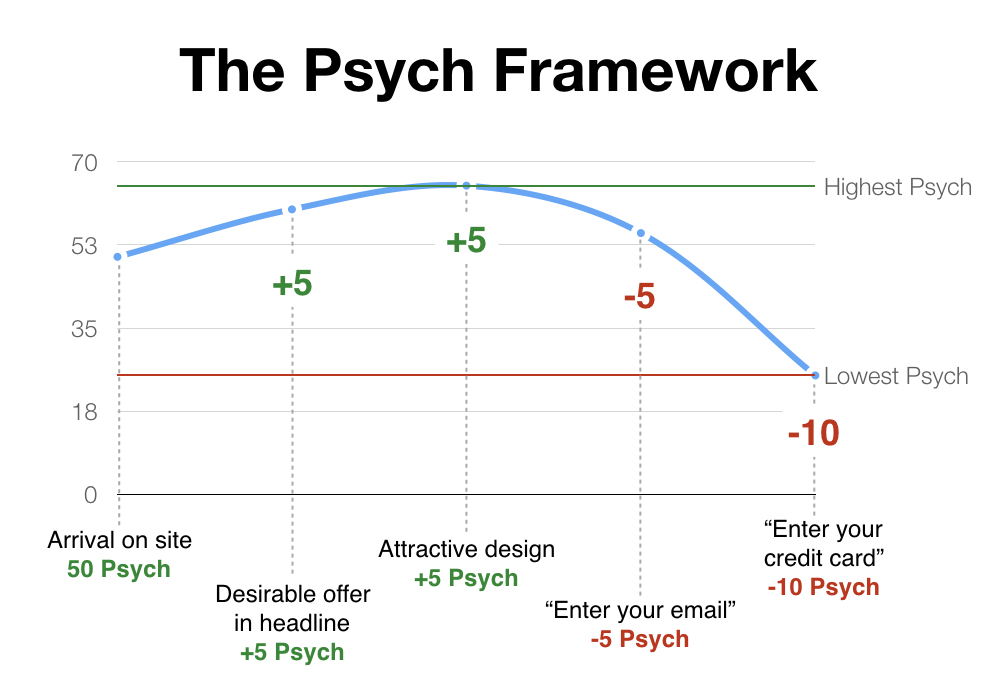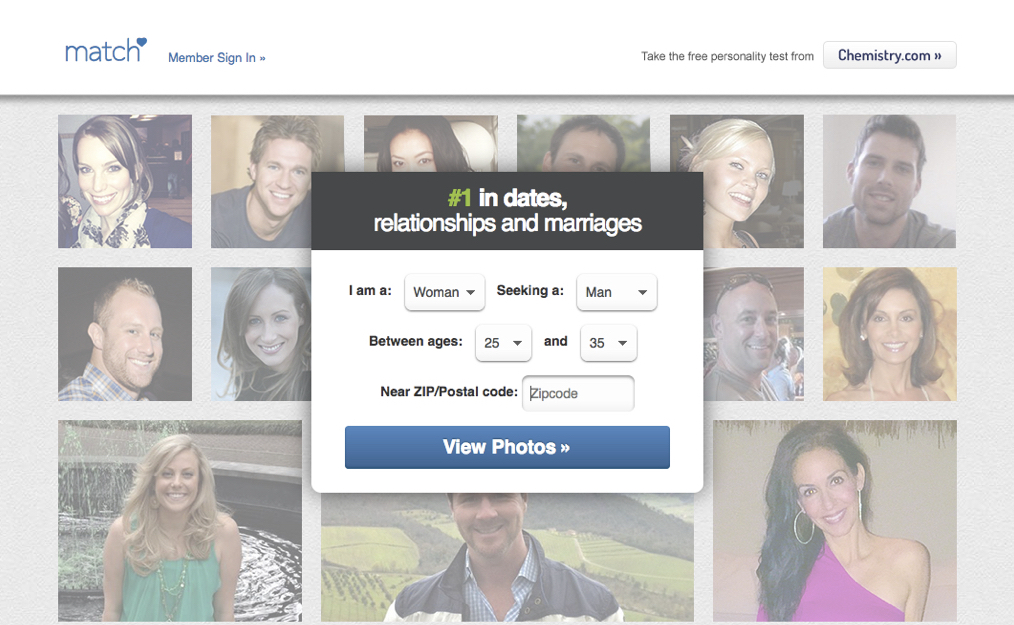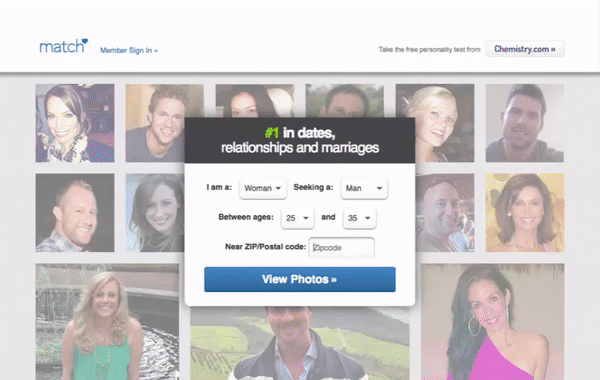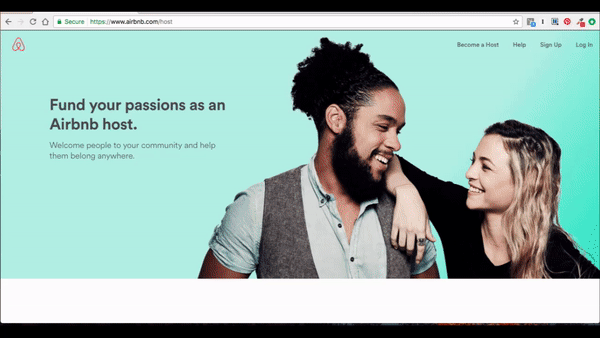Psych’d: A new user psychology framework for increasing funnel conversion (Guest Post)
[Hi readers, my good friend Darius Contractor (currently growth eng at Dropbox) has a brilliant new framework how user psychology has driven growth at companies like Bebo, Tickle, PhotoSugar and of course, Dropbox. Thanks to Darius and the folks at Reforge for putting this together. Hope you enjoy the writeup here! -Andrew]
Increase your funnel conversion by getting users Psych’d – by Darius Contractor
Have you ever wondered why people are bouncing from your nearly-frictionless onboarding flow? Why the same change can result in a lift on one page and cause drop-off on another? Or why people who find you via search bounce away after a few moments?
Having spent years focused on building experiences that got millions of users sharing, onboarding and inviting their friends, I’ve learned 2 things:
1. Every element on the page adds or subtracts emotional energy
2. Inspiring users is as important as reducing friction
A secret of the top growth experts in tech is to think about every UX interaction as an emotional event. But far from being random or beyond our control, emotion-driven interactions can be broken down into components, optimized at each step and replicated to get better results for onboarding and conversion.
The Psych Framework
Today I’m sharing the Psych Framework I’ve used to help grow companies like Tickle, Bebo and Dropbox. It is a systematic way to detect and improve the way an experience affects user emotional energy, which we call “psych”.

Every UX interaction increases or decreases Psych, the unit of measure for motivation to complete an action.
Every element of a webpage either inspires us by giving us more units of Psych or overwhelms us by depleting our existing store of Psych.
Once you understand what elements are adding to or depleting users’ energy, you can then start to manage that energy: adding inspiration and minimizing overwhelm to help users take your core actions.
Psych Units
We measure user energy in units of “Psych”, from 0 to 100.
 A user at 100 Psych is maximally committed to their current experience, does not need further motivation, and will overcome most challenges. For example, a person who needs to file their taxes tonight will do whatever it takes to download their W2 from their company’s payroll site. They’ll complete a forgotten password step, suffer through a poor interface they’ve never used before, and read through confusing numbers in order to get their taxes done in time.
A user at 100 Psych is maximally committed to their current experience, does not need further motivation, and will overcome most challenges. For example, a person who needs to file their taxes tonight will do whatever it takes to download their W2 from their company’s payroll site. They’ll complete a forgotten password step, suffer through a poor interface they’ve never used before, and read through confusing numbers in order to get their taxes done in time.
A user at 0 Psych is exhausted and disinterested, to the point of abandoning their current experience. For example, a person accidentally clicking on an ad who realizes they’ve ended up on a scam site will have no motivation to continue and will bounce.
Psych Elements
Being aware of +Psych in your UI can massively drive user excitement/growth:
Tinder: “Discover new and interesting people nearby” → Yes, let’s!
Likewise, being unaware of the -Psych in your product can massively decrease success:
Global Entry site: “Fill in 40 form fields about yourself” → Ugh, maybe later… <closes browser>
We call elements that inspire users and add to their emotional energy +Psych.
If a car rental site pitched “Get your car for $15/day” that might be a +Psych, inspiring users to try to get this good deal. Inversely, -Psych are items that tire or overwhelm users, such as long sign up forms, unclear UX, too much text, and unclear next actions.
Let’s test drive this concept with Match’s home page. After that, we’ll talk about what to look for in your flows and examine what Airbnb gets right in their host sign-up experience.
Example 1: Match’s homepage

How do we evaluate the Psych score of this page?
1. Determine your starting Psych
To understand how much Psych a user has when arriving to a site, consider how they got there.
For example, users who arrive on Match through a Google Search are high-intent and have intrinsic motivation since they’re explicitly searching for dating. So they’re around a 60 Psych.
By contrast, visits from banner clicks would likely be low-intent since their clickthrough came in response to an external trigger. They’re perhaps a 30 Psych.
A referral from a friend might result in a clickthrough that’s low intent but has high social validation. So, they might be at 50 Psych.
2. Follow the user’s attention from top-left to bottom-right
In left-to-right languages like English, we consume content from top-left to bottom-right. As we follow our natural path across the page, our Psych will either go up or (more likely) down as we encounter elements that excite us or elements that are obstacles.
On the Match homepage above, these are the elements we encounter from top-left to bottom-right:
- Logo
- Photos of singles
- “#1 in dates, relationships and marriages”
- Demographic form
- “View Photos »” button
As you can see, right after the logo assuring us it’s a real company entity that we can trust, we see appealing photos of smiling people. Then we see the byline “#1 in dates, relationships and marriages,” which assures us that we’re going with the best site and that it’s there to help us achieve dates, relationships, or even marriage.
Next, there’s a form, which requires action that potentially depletes Psych. But we’re spurred on by the “View Photos” button — which is exactly the thing a user interested in “dates, relationships, and marriage” wants to do at this point.
3. Which elements are +Psych for you? Which are -Psych?
Let’s run through the Match homepage again and tally up Psych, element by element.

These are the + Psych elements:
- “Ooohh, these people look attractive!” → +10 Psych
- “They’re #1? And I can get dates/relationships/marriages?” → +3 Psych
- “I like that it defaults to Woman seeking Man.” → +3 Psych
- “Nice, can’t wait to View Photos” → +8 Psych
These are the – Psych elements:
- “Hrm, what age am I looking for?” → -5 Psych
- “Why do they need my zipcode? Argh, keyboard…” → -10 Psych
4. Sum it up!
Tally up all the Psych elements to see where users are by the time they get to your call-to-action.
Greater-than-zero Psych means the user got through the flow.
- Starting from a Search: 50 Psych
- +Psych: 10+3+3+8 = +24 Psych
- -Psych: -5-10 = -15 Psych
- Result: 59 Psych → They made it!
Next, we’ll go through some of the top +Psych and -Psych factors across common pages.
Maximizing Psych on each of your pages
1. Assess initial Psych
People come to your site with an initial quantity of Psych.
If you’re hungry at noon and haven’t eaten all day, then your Psych level for a sandwich will be very high. That will help you power through the friction of standing in line, deciding between options, and pulling out your wallet to be saved by an $8 hero.
Therefore, the first step to evaluating Psych is to look at factors determining how much Psych people have when they enter your funnel:

2. Psych on the landing page
Once a visitor hits your landing page — great! You now have multiple chances to increase their Psych to get them to continue to signup or, if you’re not careful, decrease their Psych and cause them to bounce.

3. Enter personal info
At some point, you’re going to have to ask your visitor to enter some personal information, even if that’s just their email address.
Asking for personal information usually creates a negative Psych moment, whether it’s because people are wary to share their information or because they’re simply feeling lazy and don’t want to complete an input action.

4. Interact with product
If you have a freemium or free trial model, your user will get a chance to interact with the product before it’s time to pay. This is a chance to increase Psych before the user gets to the Psych-depleting payment action.

5. Enter payment information
For most businesses, eventually it’ll be time for users to enter their payment information and complete a transaction.
This is the ultimate Psych-depleting action because of the psychological phenomenon of the pain of spending money.
While we might think that the purchase action should be Psych-increasing because of the anticipated pleasure of acquiring something we want, it actually triggers the same area of the brain as for physical pain. So, spending money = pain.
But, MIT researchers found that credit cards increase detachment from purchases. In other words, credit cards help decrease the pain we feel from spending (cash) money.
Aside from the inherent pain and negative Psych of spending, there are still things you can do to improve Psych at the payment step.

Decreasing cognitive load is more than just short signup forms
The above is a basic framework anyone can go through for figuring out the ups and downs of Psych within an onboarding flow.
But optimizing Psych isn’t just a matter of removing clicks and reducing text. In some cases, more detailed forms or copy can help by decreasing the cognitive load on making the decision — even though it’s technically more effort. For example, including more information about security and money-back guarantees can overcome trust barriers and alleviate fears for big purchases.
Now let’s look at another live example.
Example 2: Airbnb’s hosting flow
Let’s go through a more complex example — becoming a host on Airbnb.

How do we evaluate the Psych score of this page?
1. Determine your starting Psych.
To figure out the ups and downs of Psych for someone who’s thinking about hosting on Airbnb, let’s start with their mindset before they hit the landing page.
- They might have heard some stories about making a lot of money on Airbnb → +20 Psych
- They might have heard about it being lots of work or a negative hosting story → -10 Psych
But ultimately their positive starting Psych is greater than their doubts and they are motivated enough to check it out.
2. Follow the user’s attention from top-left to bottom-right
Airbnb offers three different ways for becoming a “host” on the platform:
- Renting a house or apartment
- Helping neighbors with their Airbnb listings
- Leading a tour or other travel experience
To keep it simple for this post, we’ll just look at the core Airbnb “host” action — renting a house or apartment.
As you follow the user’s attention from top-left to bottom-right, it’s pretty clear that Airbnb knows what its hosting users care most about — making extra money by renting out their places.

Here are the immediate elements we encounter above the fold, from top-left to bottom-right:
- Logo
- “Earn money” value proposition
- An interactive calculator to see how much you could earn
- A “Weekly Average” box with an impressive earnings estimate and a dollar sign
From there, the page displays more content aimed at increasing Psych and reducing doubt:
- Tactical instructions that demystify how Airbnb works
- Reassuring details about safety and security, like their host protection insurance and their $1M guarantee for hosts
- Social proof in the form of a video featuring a diverse handful of hosts talking about how income from Airbnb has helped them to stay in their homes, pay for medical bills, or fund a retirement.
Because users have to log in to continue the host flow, Airbnb’s goal on this first page is to drive up Psych high enough to carry them through the subsequent, more tedious steps in the flow — logging in or creating an account and setting up their first listing.
3. Which elements are +Psych for you? Which are -Psych?
Now let’s run through and tally up Psych, element by element.
Airbnb does a good job of loading up the page with +Psych elements because they know they’re asking a lot of the user:
- “Earn money? Yes please.” → +10 Psych
- “I can rent out an entire place, or a room, or just a couch? Then there probably is something for me.” → +5 Psych
- “$741 weekly average… higher than I thought.” → +10 Psych
- “Host insurance, and a $1M guarantee that protects my stuff… ok phew.” → +4 Psych
4. Sum it up!
Once again, you can tally up all the Psych elements to see where users are by the time they get to a call-to-action. Remember, greater-than-zero Psych means the user clicked the “Sign me up” button.
This is a simple tally of Psych on just one of the pages of the Airbnb “become a host” flow. There are obviously many more steps before a user becomes a successful host that’s contributing to the marketplace. With that in mind, you can run through the Psych Framework at each step of your onboarding or conversion flow to find opportunities to reverse -Psych and increase +Psych.
So that’s the psych framework in a nutshell. Tell me what you think in the comments and if you’d like to hear more.
Disclaimer: I’m a Dropbox employee, but I’m not posting on behalf of Dropbox or in an official capacity as a Dropbox employee. This post was originally published here.
PS. Get new updates/analysis on tech and startupsI write a high-quality, weekly newsletter covering what's happening in Silicon Valley, focused on startups, marketing, and mobile.
Views expressed in “content” (including posts, podcasts, videos) linked on this website or posted in social media and other platforms (collectively, “content distribution outlets”) are my own and are not the views of AH Capital Management, L.L.C. (“a16z”) or its respective affiliates. AH Capital Management is an investment adviser registered with the Securities and Exchange Commission. Registration as an investment adviser does not imply any special skill or training. The posts are not directed to any investors or potential investors, and do not constitute an offer to sell -- or a solicitation of an offer to buy -- any securities, and may not be used or relied upon in evaluating the merits of any investment.
The content should not be construed as or relied upon in any manner as investment, legal, tax, or other advice. You should consult your own advisers as to legal, business, tax, and other related matters concerning any investment. Any projections, estimates, forecasts, targets, prospects and/or opinions expressed in these materials are subject to change without notice and may differ or be contrary to opinions expressed by others. Any charts provided here are for informational purposes only, and should not be relied upon when making any investment decision. Certain information contained in here has been obtained from third-party sources. While taken from sources believed to be reliable, I have not independently verified such information and makes no representations about the enduring accuracy of the information or its appropriateness for a given situation. The content speaks only as of the date indicated.
Under no circumstances should any posts or other information provided on this website -- or on associated content distribution outlets -- be construed as an offer soliciting the purchase or sale of any security or interest in any pooled investment vehicle sponsored, discussed, or mentioned by a16z personnel. Nor should it be construed as an offer to provide investment advisory services; an offer to invest in an a16z-managed pooled investment vehicle will be made separately and only by means of the confidential offering documents of the specific pooled investment vehicles -- which should be read in their entirety, and only to those who, among other requirements, meet certain qualifications under federal securities laws. Such investors, defined as accredited investors and qualified purchasers, are generally deemed capable of evaluating the merits and risks of prospective investments and financial matters. There can be no assurances that a16z’s investment objectives will be achieved or investment strategies will be successful. Any investment in a vehicle managed by a16z involves a high degree of risk including the risk that the entire amount invested is lost. Any investments or portfolio companies mentioned, referred to, or described are not representative of all investments in vehicles managed by a16z and there can be no assurance that the investments will be profitable or that other investments made in the future will have similar characteristics or results. A list of investments made by funds managed by a16z is available at https://a16z.com/investments/. Excluded from this list are investments for which the issuer has not provided permission for a16z to disclose publicly as well as unannounced investments in publicly traded digital assets. Past results of Andreessen Horowitz’s investments, pooled investment vehicles, or investment strategies are not necessarily indicative of future results. Please see https://a16z.com/disclosures for additional important information.
